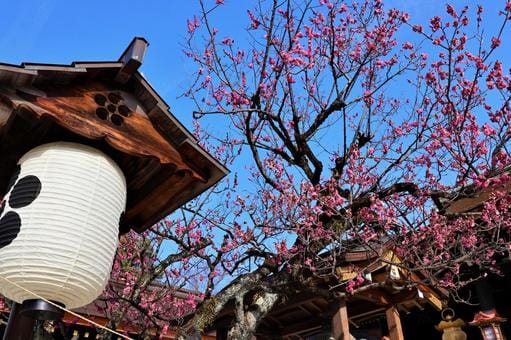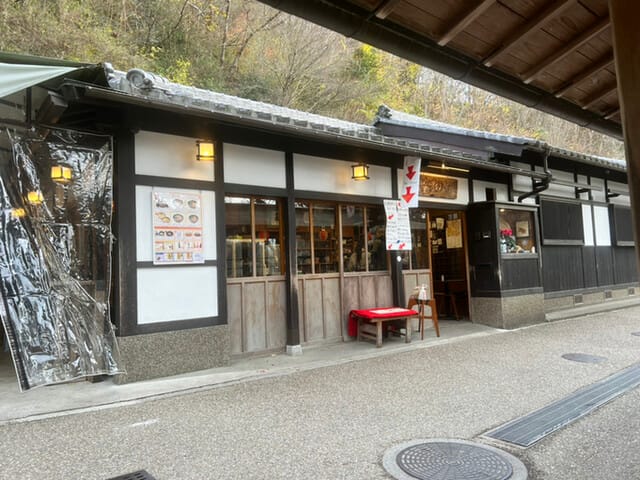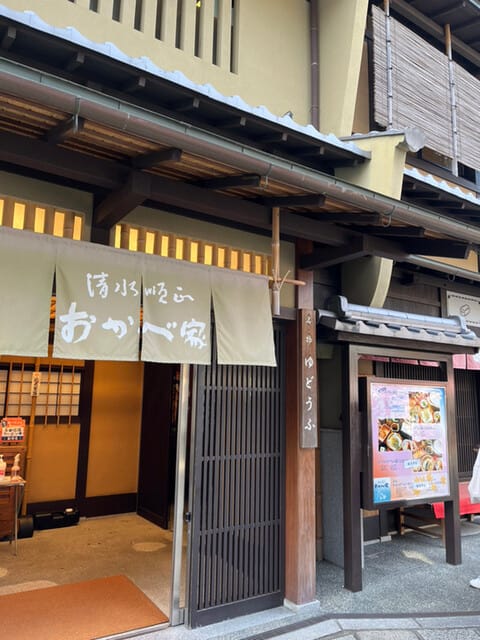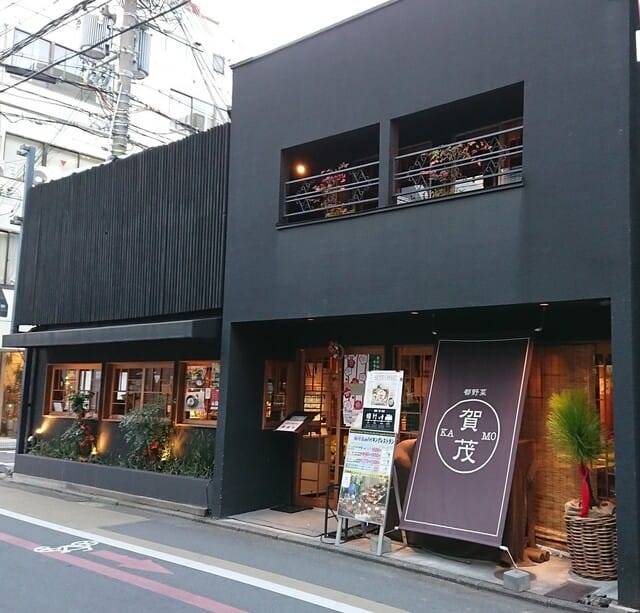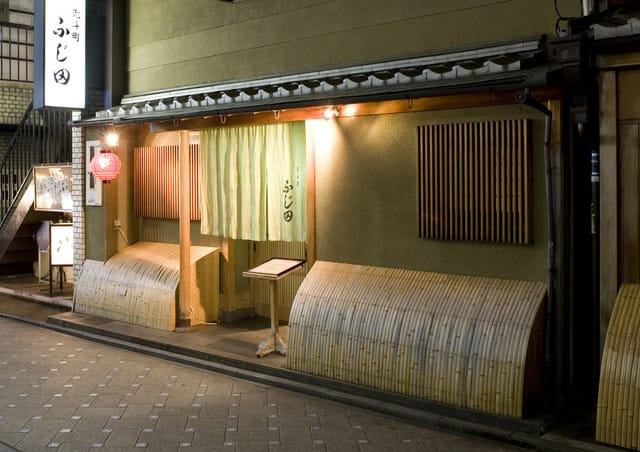Kyoto in winter is enveloped in tranquility and the beauty of snow. When I used to live in Kyoto, I was completely captivated by the winter scenery.
The snowy landscapes of famous spots like Kinkaku-ji and Kiyomizu-dera are breathtakingly beautiful, but the winter silence experienced in nature, such as in the Tadasu no Mori forest of Shimogamo Shrine or the bamboo groves of Arashiyama, is also exceptional.
In January, many people visit for Hatsumode (first shrine visit of the year), showing a different kind of hustle and bustle in Kyoto. Visitors come to shrines like Yasaka Shrine for warding off evil spirits or Fushimi Inari Shrine with its impressive thousand torii gates, each with their own wishes in their hearts.
Previously, I had the image that Kyoto was best in autumn and spring. However, after living there, the quiet winter became my favorite season, as it's when you can truly enjoy Kyoto's solemn atmosphere.
Of course, Kyoto's winter can be harsh, so proper cold protection is essential. But in return, there are fewer people than in other seasons, making it perfect for enjoying Kyoto at a leisurely pace.
Snowy Kyoto shows a different, special face. I hope you'll experience the winter face of this atmospheric ancient capital after reading this article.
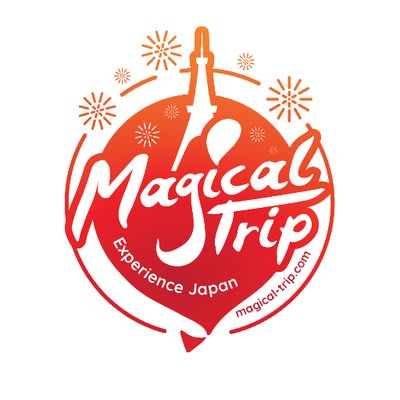
If you are looking for Comprehensive Kyoto Guide, check the article below! I summarized how and where you can enjoy different areas of Kyoto as much as possible.
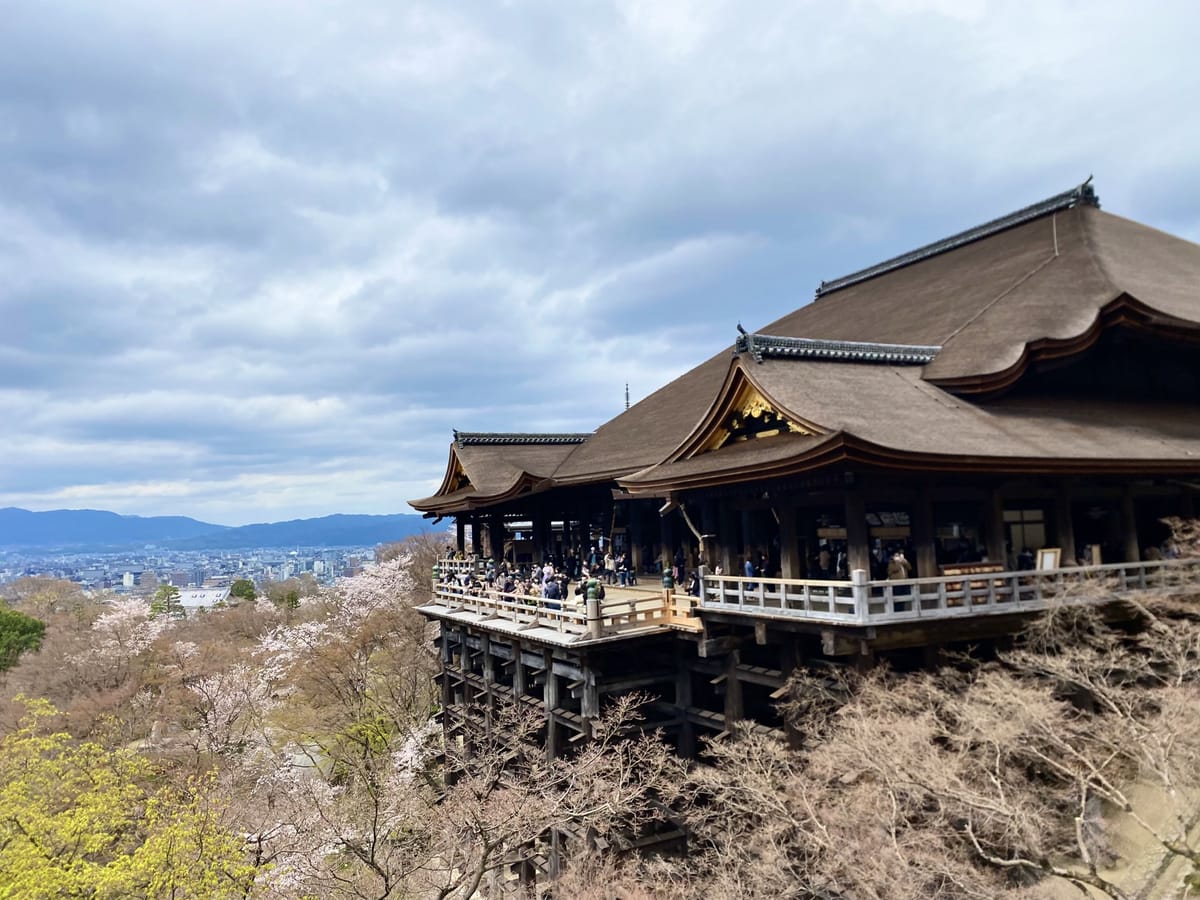
Table of Contents
・How to Enjoy Kyoto in Winter?
・Spots to Enjoy Snowy Scenery in Winter Kyoto
・Hatsumode: Winter-specific Festivals
・Winter Kyoto Cuisine
・Tips for Winter Kyoto Travel
How to Enjoy Kyoto in Winter?
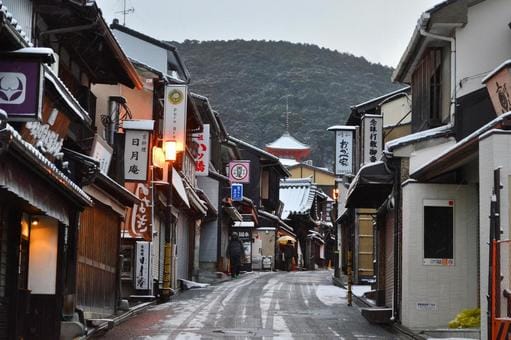
Kyoto in winter is quiet, and on some days, snow beautifully adorns the city. This season, when there are fewer tourists, is perfect for savoring the ancient capital's ambiance.
It's true that Kyoto's winter can be harsh, with the possibility of snow, which might seem unsuitable for sightseeing. But in reality, heavy snow is rare within Kyoto city. While the northern parts and mountainous areas of Kyoto often see snowfall, it's uncommon in the urban areas.
In recent years, due to global warming, the number of snowy days has decreased compared to the past. When I used to live in Kyoto, I feel like there were more opportunities to enjoy snowy scenery than now.
However, if you're lucky enough to catch snowfall, you can witness the beautiful sight of temples and shrines covered in pristine white snow. Kyoto has many historic buildings, including World Heritage sites, so the scenery during snowfall is truly breathtaking.
Compared to other seasons, especially the tourist seasons of autumn and spring, winter in Kyoto might have fewer attractions. But that's precisely why you can enjoy Kyoto sightseeing at a leisurely pace, avoiding crowds.
Being able to fully appreciate the beautiful ancient capital's appearance, enveloped in silence, without being jostled by crowds - that's the way to spend winter in Kyoto. Rather than efficiently touring sightseeing spots, I recommend a trip where you physically experience the atmosphere of Kyoto.
Spots to Enjoy Snowy Scenery in Winter Kyoto
An essential part of winter sightseeing in Kyoto is admiring the beautiful sight of snow-covered temples and shrines. Kyoto has many such scenic spots. Let me introduce you to some particularly recommended places.
Kinkaku-ji Temple (Golden Pavilion)
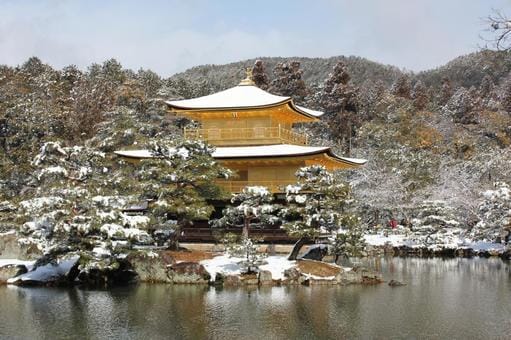
Snow-covered Kinkaku-ji Temple is a sight you should see at least once in your lifetime. The golden Shariden covered in pure white snow is truly mystical and beautiful.
The snowy scenery of the garden, enveloped in silence, is particularly spectacular. The reflection of the inverted Golden Pavilion in the pond is also dreamlike.
As there are fewer visitors than in autumn, you can leisurely enjoy this solemn atmosphere, which is another attraction. Although I've visited many times, the snowy Kinkaku-ji remains vividly in my memory. I believe it's a quintessential winter scene in Kyoto.
Website: https://www.shokoku-ji.jp/en/kinkakuji/
If you are interested in Kinkaku-ji Temple, check the article below! I summarized in more details and how I felt there.
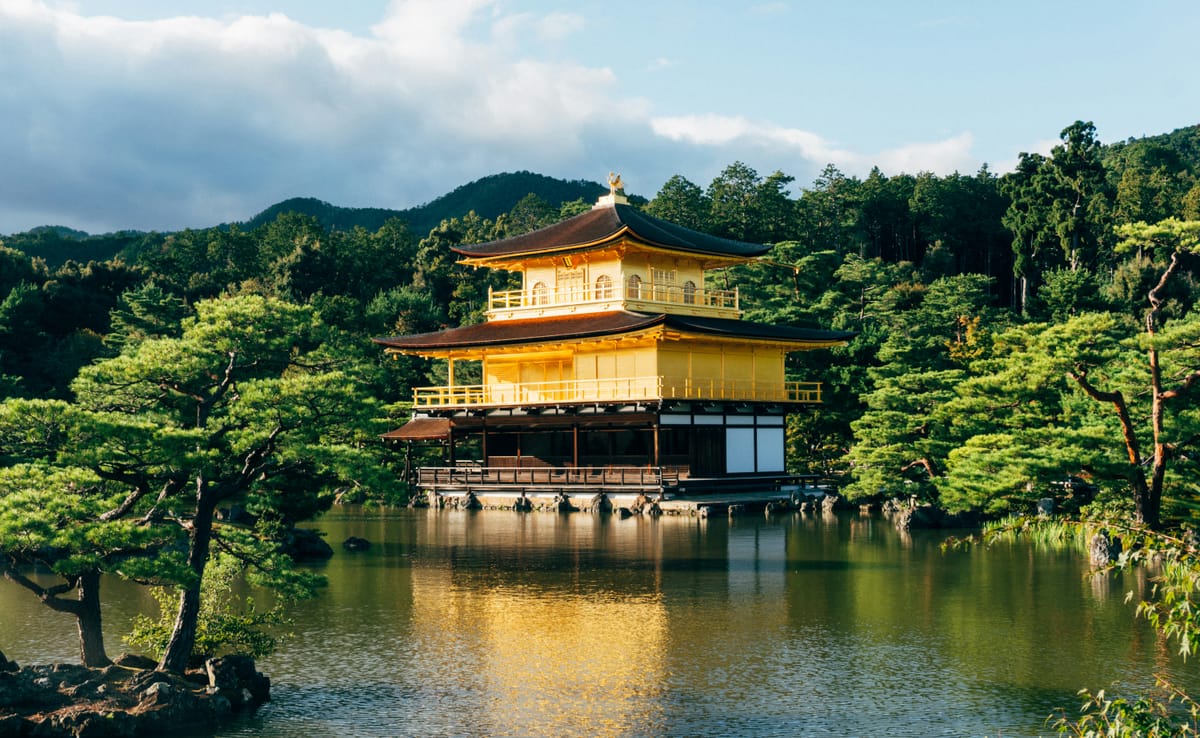
Kiyomizu-dera Temple
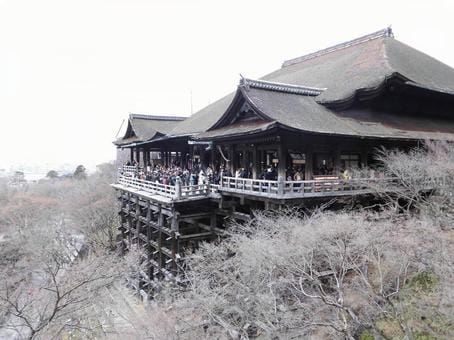
Kiyomizu-dera Temple is another iconic spot representing winter in Kyoto. From the stage of Kiyomizu-dera Temple, built on the mountainside, you can overlook the entire Kyoto city, and the beauty of the snowy landscape spreading below is truly eye-catching.
Various parts of Kiyomizu-dera's scenery, such as the Otowa Waterfall, the three-storied pagoda, and the Nio-mon gate, are dyed white with snow. Take a leisurely stroll and enjoy this beauty.
However, in winter, the stone pavements and stairs at Kiyomizu-dera Temple are often frozen, so be very careful of your footing. I recommend wearing shoes with good slip resistance when visiting.
Website: https://www.kiyomizudera.or.jp/en/
If you are interested in Kiyomizu-dera Temple, check the article below! I summarized in more details and how I felt there.
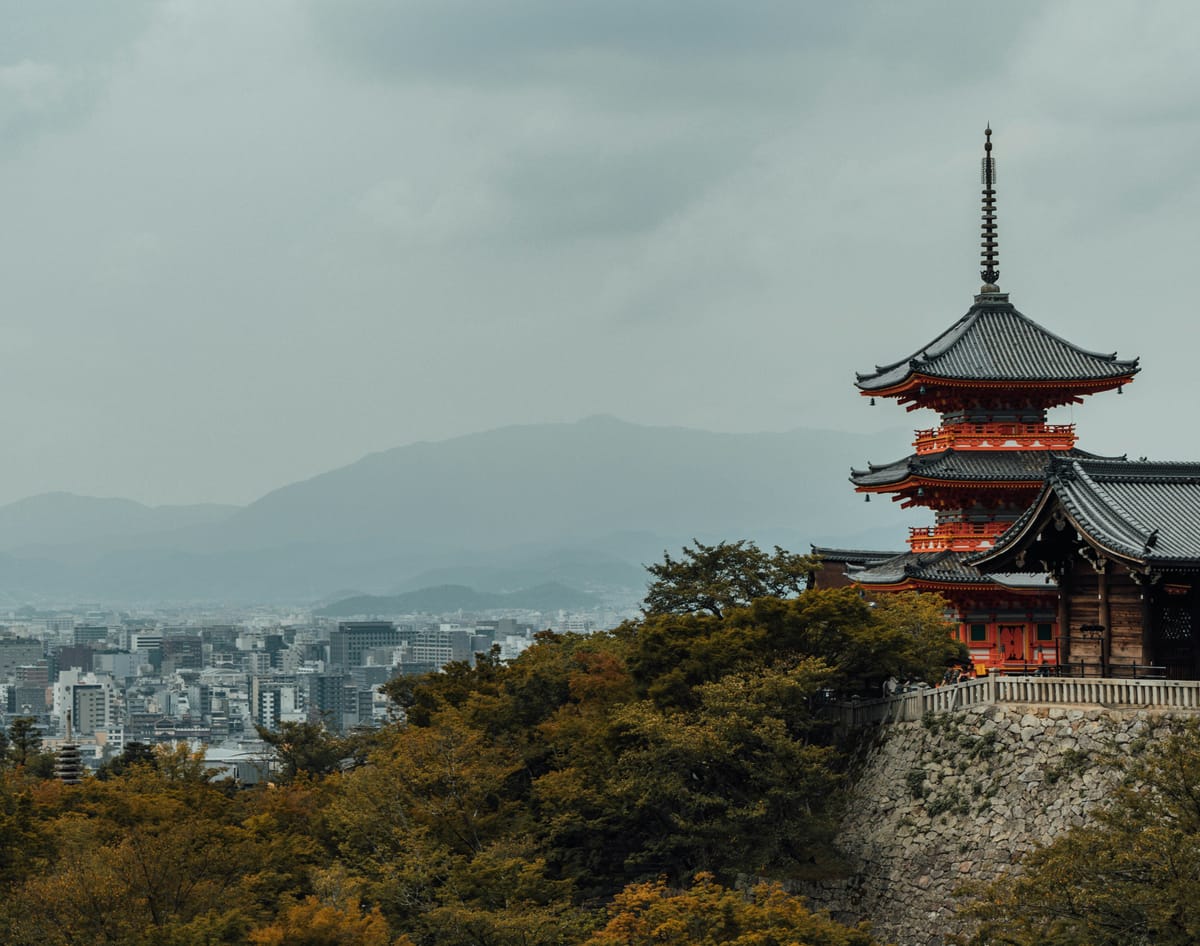
Arashiyama
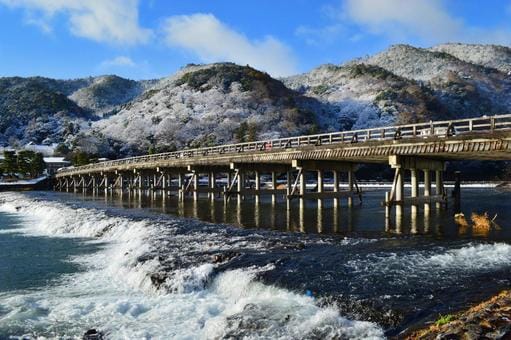
The view of the Arashiyama mountains from Togetsukyo Bridge is one of the representative winter scenes in Kyoto. The contrast of snow covering the river surface and whitening the mountainsides is breathtakingly beautiful.
If you're strolling through snowy Arashiyama, I recommend the Bamboo Grove path. The bamboo forest also gets a snow makeover, showing a different, fantastical appearance than usual.
The garden of Tenryu-ji, representative of Arashiyama, is also splendid. The Sogenchi Garden turns into a silver world when it snows.
If you're traveling by train, you can also enjoy the scenery from the windows of the JR Sagano Line. Although the Sagano Scenic Railway is closed during winter, you can still fully enjoy the snowy scenery from the windows of regular trains.
Access to Arashiyama is just a short walk from either Saga-Arashiyama Station on the JR Sagano Line or Arashiyama Station on the Hankyu Arashiyama Line.
If you are interested in Arashiyama, check the article below! I summarized how and where you can enjoy Arashiyama as much as possible.
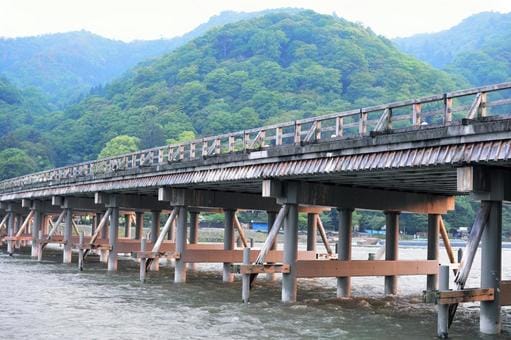
Shimogamo Shrine
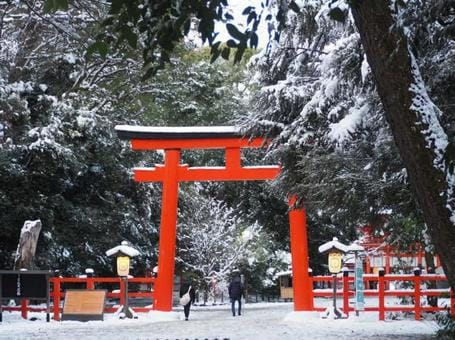
Shimogamo Shrine is one of the most historic shrines representing the ancient capital of Kyoto. It's also registered as a World Heritage site, making it one of Kyoto's prime historical spots.
When it snows, this Shimogamo Shrine becomes enveloped in an even more mystical atmosphere.
When visiting snowy Shimogamo Shrine, I also recommend strolling through the Tadasu no Mori forest within the shrine grounds. This forest also increases its mystique when covered in snow. As you gaze at the silently falling and accumulating snow in the depths of the forest where there's no sign of people, you'll feel like you've time-slipped into a world far removed from the modern era.
I believe the special time spent at Shimogamo Shrine and Tadasu no Mori will certainly remain in your memories of your Kyoto trip.
Access is convenient, about a 10-minute walk from Demachiyanagi Station on the Keihan Line, so please do visit.
Website: https://www.shimogamo-jinja.or.jp/english
Hatsumode: Winter-specific Festivals
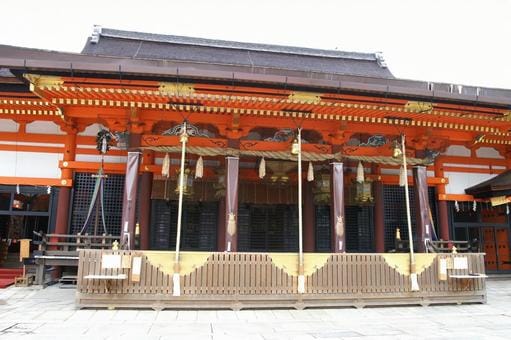
When it comes to winter in Kyoto, we mustn't forget about Hatsumode. This important traditional event, held from January 1st to 3rd, involves visiting shrines to pray for good health and fortune for the year.
Fushimi Inari Shrine attracts visitors from all over the country. The sight of the vermilion torii gates known as Senbon Torii (thousand torii gates) is truly impressive. During the Hatsumode period, it's especially crowded, and even passing through the tunnel of torii gates can be a struggle. But the unique atmosphere is worth experiencing at least once.
Yasaka Shrine, famous for its deity that wards off evil, is also a popular Hatsumode spot. It's mainly crowded with locals. Stalls selling amazake (sweet sake) line the approach to the shrine, adding to the festive atmosphere. When I lived in Kyoto, I never missed going to Yasaka Shrine for Hatsumode every year.
An essential part of Hatsumode is drawing "omikuji" (fortune slips). These contain advice on various aspects like general fortune, love, and financial luck for the year.
Kyoto's shrines are all historically significant and have a solemn atmosphere. Hatsumode is the perfect opportunity to experience the charm of these shrines. Why not visit and use it as a chance for a fresh start in the new year?
As a note, it's more common to go to shrines rather than temples for Hatsumode. So if you visit Kyoto during the New Year period, I recommend visiting shrines.
Winter Kyoto Cuisine
When traveling in Kyoto during winter, enjoying seasonal flavors is also important. There are many dishes that warm you up from the core, which you'll especially crave in the cold season.
Yudofu (Hot Tofu)

First, we can't miss Yudofu. Eating steaming hot tofu from a pot on a cold winter day warms you up from the core of your body.
The tofu itself in Kyoto's Yudofu is exquisite. It may look simple, but the moment you put it in your mouth, the umami of the tofu itself spreads. Thanks to the dashi broth, the goodness of tofu as an ingredient is highlighted.
There are many long-established Yudofu restaurants in Kyoto, but they might require reservations or feel a bit intimidating. But don't worry. There are also places where you can casually enjoy it.
I recommend these two restaurants. Both are located in popular tourist areas and are known for offering authentic Yudofu that's easily accessible.
Recommended Yudofu Restaurant 1: Takinoya
Source: Tabelog by array911
"Takinoya," located along the approach to Kiyomizu-dera, is perfect for lunch or a break during sightseeing. It's popular even among locals for its reasonably priced Yudofu set meals.
Its casual atmosphere where you can drop in without a reservation is also appealing. Why not take a break with warm Yudofu before or after visiting Kiyomizu-dera?
<Store Information>
Address: Beside Otowa Waterfall, Kiyomizu-dera Temple Grounds, 1 Chome-302 Kiyomizu, Higashiyama Ward, Kyoto, 605-0862
Closed: Thursdays
Phone: 075-561-5117
Hours: 10 AM–4 PM
Website: https://tabelog.com/en/kyoto/A2601/A260301/26002922/
Recommended Yudofu Restaurant 2: Okabeya
Source: Tabelog by Karin11223
This popular restaurant "Okabeya" is also near Kiyomizu-dera, on Ninenzaka. The Yudofu course costs around 3,000 yen per person, which might seem a bit pricey, but I think it's well worth it.
You can enter without a reservation, but be prepared to queue even on weekdays as it's an extremely popular spot. I believe it's worth the wait.
<Store Information>
Address: 2 Chome-239 Kiyomizu, Higashiyama Ward, Kyoto, 605-0862
Closed: None
Phone: 075-541-7111
Hours: 10:30 AM–5 PM
Website: https://www.okabeya.com/lang/en.html
Obanzai and Kyo Ryouri (Kyoto Cuisine)
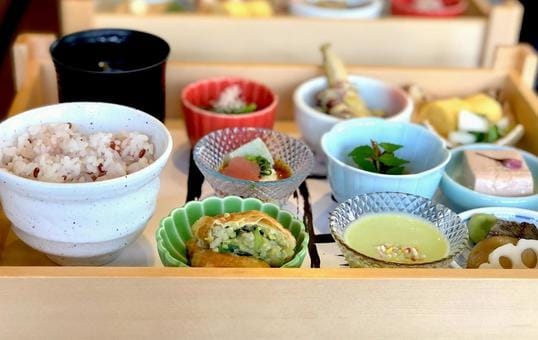
Along with Yudofu, you can't miss Obanzai and Kyo ryouri (Kyoto cuisine). Obanzai, with its homely taste using plenty of seasonal ingredients from local sources, and authentic Kyo ryouri, which is visually beautiful, are both soul foods representative of Kyoto.
A characteristic of both Obanzai and Kyo ryouri is their dedication to ingredient selection. Kyoto has been thriving in vegetable cultivation since ancient times, and a unique food culture has taken root.
I hope you'll enjoy Obanzai and Kyo ryouri using winter ingredients in Kyoto, a treasure trove of food.
Recommended Obanzai Restaurant: Miyako Yasai Kamo
Source: Tabelog by Miyako Yasai Kamo
First, I'd like to introduce "Miyako Yasai Kamo," which is hugely popular in Kyoto as a specialist Obanzai restaurant. You can enjoy a variety of dishes using fresh Kyoto vegetables sourced from contracted farmers in a buffet style.
All vegetables are organic or reduced-pesticide. They also don't use chemical seasonings, so you can fully enjoy the original taste of the vegetables. Enjoying healthy and delicious Obanzai while having a relaxed conversation - this is truly a Kyoto-like way to spend time.
It's located right near Karasuma Station or Kyoto Station, so it's also recommended for a stop during sightseeing. There's also a branch at Osaka Station, so you can visit during Osaka sightseeing too.
Website: https://nasukamo.net/
Recommended Kyo Ryouri Restaurant: Pontocho Fujita
Source: Tabelog by Ponotcho Fujita
To savor the essence of Kyoto cuisine, I definitely recommend a long-established restaurant. Among them, "Pontocho Fujita" in Pontocho is known as a famous restaurant that impresses even Kyoto's food connoisseurs.
Dinner costs around 10,000-20,000 yen per person, which is quite high-class. But you can have a supreme Kyo ryouri dining experience that's worth the price.
If that's challenging for your budget, I recommend lunch. You can enjoy a course meal for around 10,000 yen. It's a good opportunity to experience Pontocho Fujita's taste at a more reasonable price.
Reservations can be made online, so it's easy to use even for foreigners who are unsure about their Japanese. This is one restaurant you shouldn't miss if you want to taste authentic Kyoto cuisine.
<Store Information>
Address: 179-2 Zaimokucho, Nakagyo Ward, Kyoto, 604-8017
Closed: Mondays, Tuesdays
Phone: 075-255-0500
Hours: 11:30 AM–2 PM, 5:30 PM–9:30 PM
Hours (Fridays): 5:30 PM–9:30 PM
Website: https://www.tablecheck.com/en/pontocho-fujita
Tips for Winter Kyoto Travel
Finally, I'll introduce some tips for a comfortable winter trip to Kyoto.
Prepare for the Cold
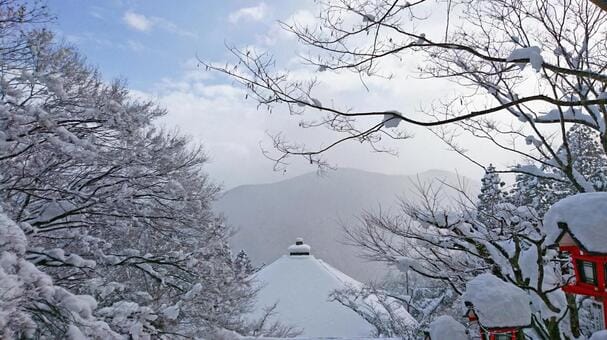
First and foremost is preparing for the cold. Kyoto's winter is really cold. So it's essential to prepare thick coats, sweaters, scarves, and so on.
But what's not widely known is the indoor situation in Kyoto. The first time I went sightseeing in winter, I heard "Kyoto is cold" and bundled up quite a bit to go around, but I ended up sweating profusely in the subway.
Since it's often warm inside trains and buildings, the key is to dress in layers that you can easily take off.
Be Cautious When Traveling by JR

For moving around Kyoto city, trains or buses are basically convenient. But in winter, JR trains often stop due to snow.
On the other hand, subways and Keihan or Hankyu trains are relatively less affected by snow. So the key to winter Kyoto travel is to use these trains wisely.
If you plan to visit places that can only be reached by JR, I recommend checking the operation status on the JR West official website in advance.
Website: https://x.gd/omwLLX
Kyoto in winter is indeed very cold, but its charm far outweighs that. The beauty of the ancient capital adorned in snow is truly eye-catching.
In this article, I've introduced points for fully enjoying winter in Kyoto, including my own experiences. I hope you've gained some insight into how to enjoy Kyoto uniquely in winter.
During my time living in Kyoto, I really loved strolling through the ancient capital in winter. It's because you can physically feel Kyoto's original ambiance, precisely because there are fewer people and it's quiet.
I'd be happy if this article has sparked even a little interest in winter travel to Kyoto. Prepare for the cold and go see the winter scenery of the ancient capital for yourself!
If you are interested in Events in Decenber, check the article below! I summarized how and where you can enjoy Events as much as possible.
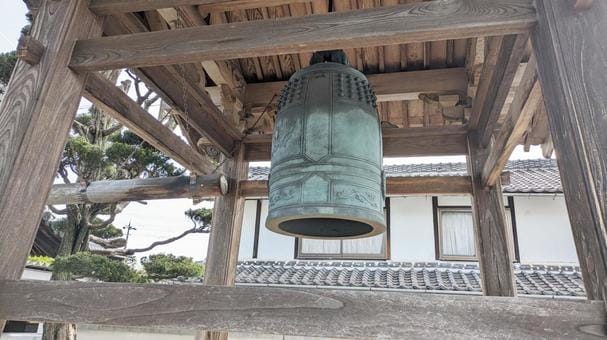
If you are interested in Events in January, check the article below! I summarized how and where you can enjoy Events as much as possible.
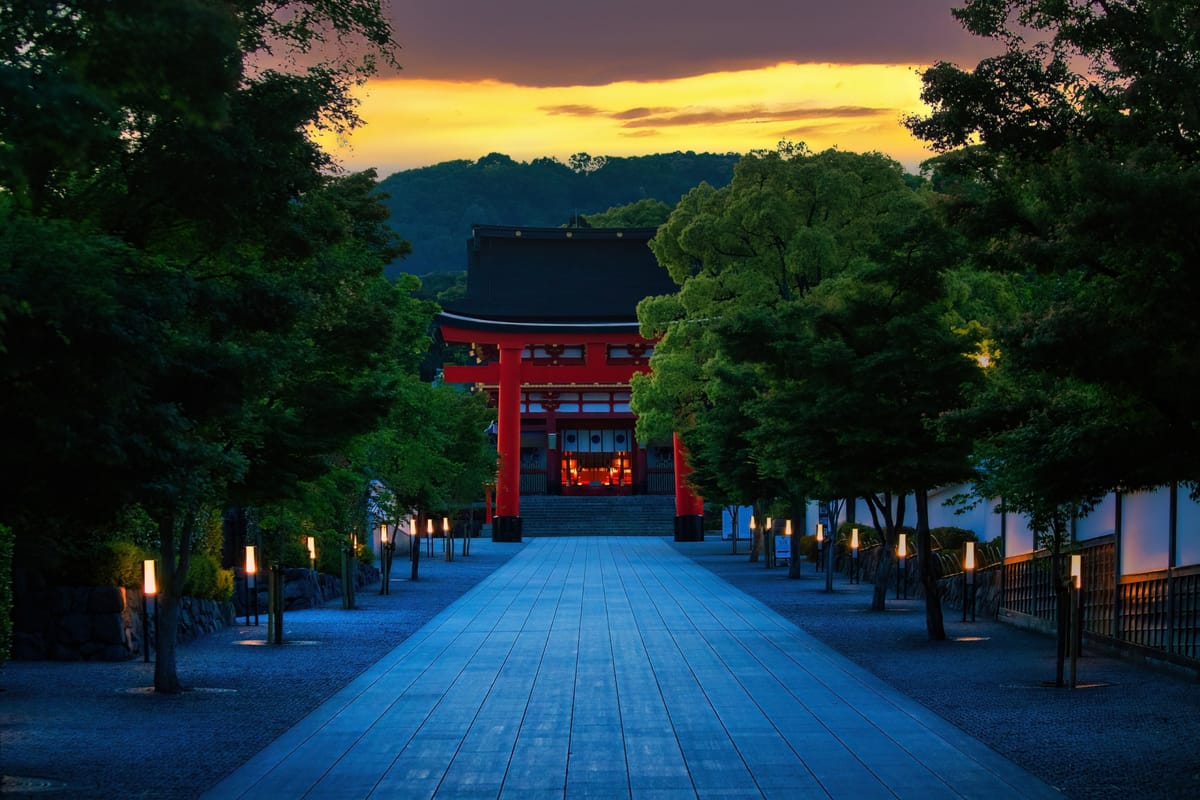
If you are interested in Events in February, check the article below! I summarized how and where you can enjoy Events as much as possible.
